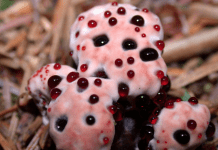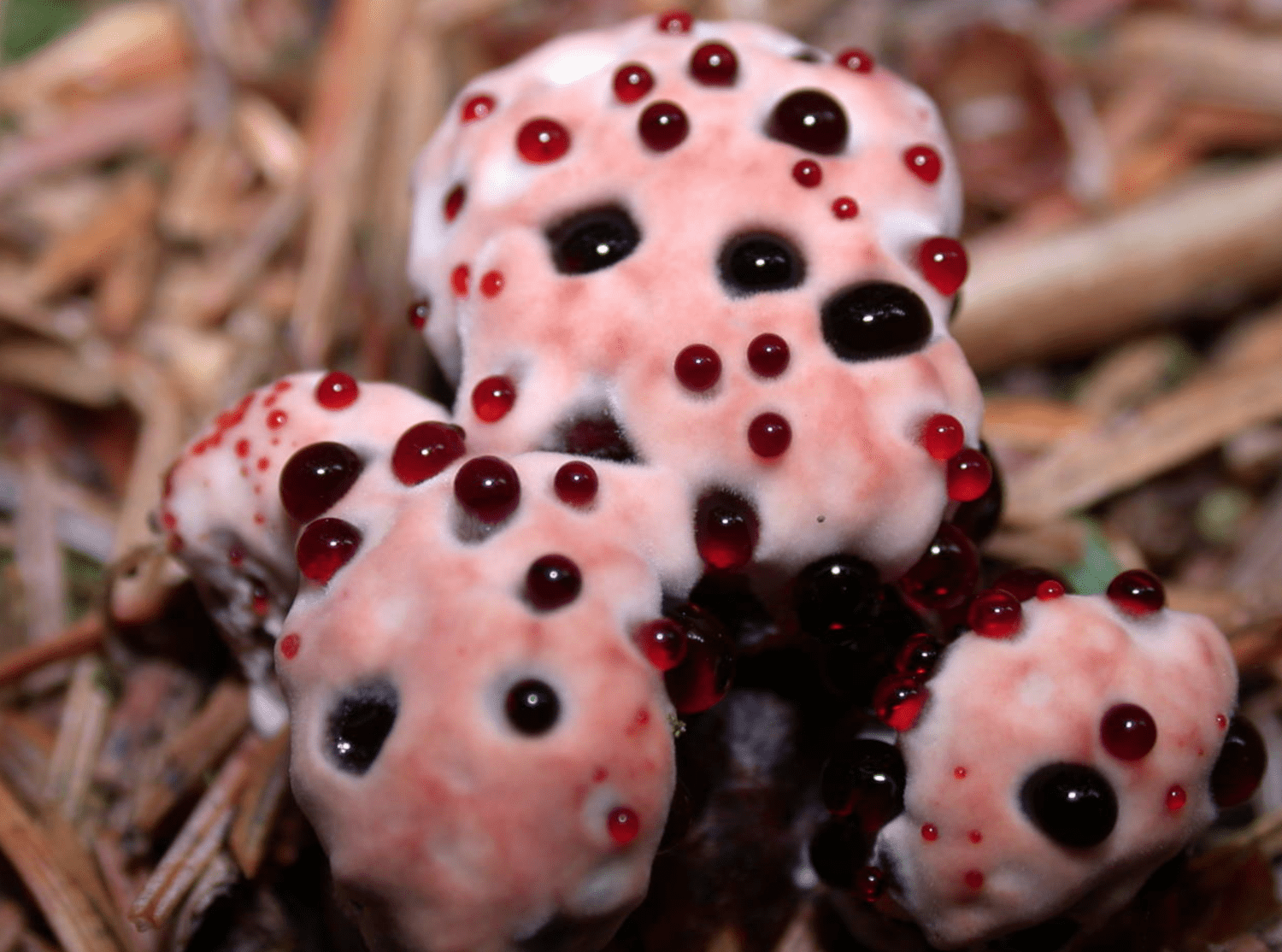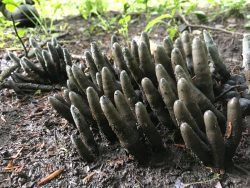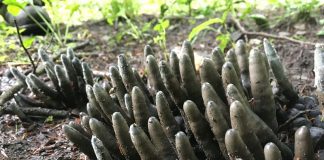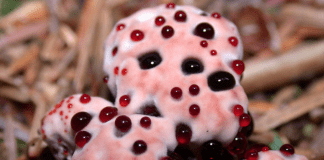One of the most captivating and mysterious phenomena in nature is that of the “zombie fungus,” a parasitic organism manipulating its host’s behavior to its own benefit. This parasitic fungus manipulates its host’s behavior for its own benefit, leading to a gruesome yet captivating life cycle. In this blog post, we will delve into the mysterious world of zombie fungi and explore their unique characteristics.
We’ll begin by discussing what exactly zombie fungus is and how it works on its hosts, particularly ants infected with Ophiocordyceps unilateralis. We will then examine where these fungal infections can be found geographically, as well as their prevalence in different habitats such as tropical forests.
As we continue our exploration of this peculiar phenomenon, we’ll uncover how zombie fungi spread through spore dispersal mechanisms and whether there is any potential for human infection. Finally, we’ll discuss the symptoms exhibited by infected ants and investigate possible treatment options and prevention strategies against these parasitic fungi.
Ophiocordyceps unilateralis, a dread-inducing parasitic organism, carries the possibility of causing ecological harm. It’s time to turn our attention now towards Candida Auris, another emerging fungal threat with global implications due to its adaptation to changing climates.
The Terrifying Effects of the Zombie Fungus
Ophiocordyceps unilateralis, also known as the zombie fungus, has gained attention due to its horrifying effects on ants. This parasitic fungus infects ants and compels them to climb onto a leaf, lay down and wait for spores to sprout. Although it does not affect fish, amphibians or mammals directly, its existence raises concerns about the potential impact of fungi on ecosystems.
Infection process in ants by Ophiocordyceps unilateralis
The infection process begins when an ant comes into contact with fungal cells present on forest floor debris. The fungal cells penetrate through the exoskeleton of the ant and start multiplying within its body. As they grow inside their host, these parasitic fungi release chemicals that manipulate the behavior of infected ants.
- Ants infected with Ophiocordyceps become disoriented and leave their nests,
- They are compelled to climb up vegetation until they reach a suitable height,
- The zombie fungus forces them to bite down on leaves or twigs before dying,
- A stalk grows out from behind their heads, releasing spores that fall back onto the forest floor below.
This cycle continues as more unsuspecting ants come into contact with these deadly spores.
Potential ecological impacts of parasitic fungi
Tropical forests are home to numerous species vulnerable to such infections, including various types of ant species targeted by different strains of Ophiocordyceps unilateralis. While researchers like Dr Charissa de Bekker have been studying this phenomenon for years now (source), the full extent of its impact on ecosystems remains unclear. Some possible consequences include the following:
- Disruption in ant populations and their role as ecosystem engineers,
- Potential spread to other insect species, affecting pollination or decomposition processes,
- The emergence of new fungal strains capable of infecting a wider range of hosts.
To effectively mitigate the risks posed by Ophiocordyceps unilateralis and its potential to spread to other insect species, impacting pollination or decomposition processes, further study into its biology and ecology is essential.
Candida Auris is a growing threat to global health, with its spread and risks continuing to be studied. The next heading examines the enemies within – novel parasitic fungi species that are attacking infected ants in complex relationships.
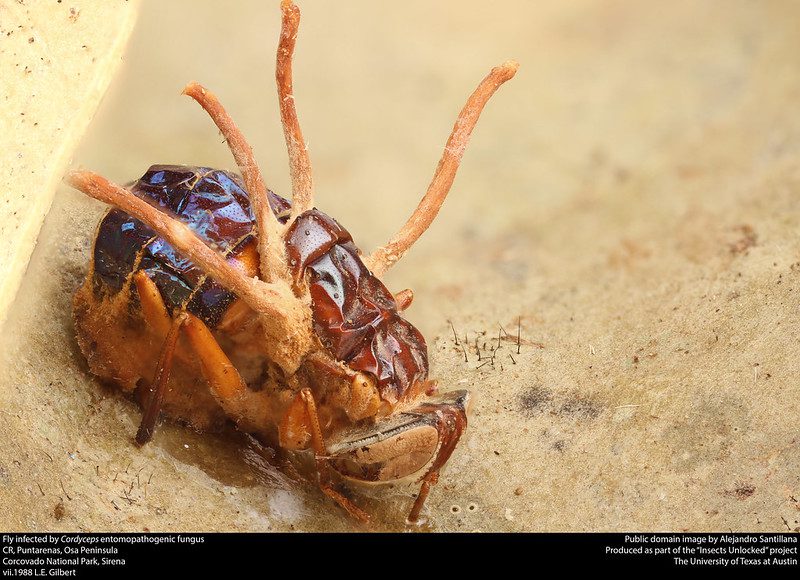
Key Takeaway:
Zombie fungus is a type of parasitic fungi that infects and takes control of the behavior of insects, turning them into “zombies” to spread their spores. Other arthropods, such as ants, caterpillars, and spiders, have been seen to succumb to the effects of zombie fungus.
Enemies Within – New Parasites Attacking Infected Ants
In a fascinating twist of nature, scientists have discovered two new genera of previously unknown fungi living inside infected “zombie” ants. These ants are found clinging lifelessly from leaves above ground level, with white stalks growing out from between their head capsules. While these newly discovered parasites do not zombify their host like Ophiocordyceps unilateralis, they instead feed off its tissues while causing harm – sometimes even castrating it before consuming all available resources within its body.
Identification and Characteristics of Novel Parasitic Fungi Species
The research team led by Charissa de Bekker at the University of Central Florida identified two new fungal species that infect ants in tropical forests: Myrmicinosporidium durum and M. coccoides. Both species belong to the family Laboulbeniaceae, which is known for containing parasitic fungi that attack insects such as beetles and flies.
- M. durum: This fungus forms small spore-producing structures on the surface of infected ants’ exoskeletons, making them easily visible under a microscope.
- M. coccoides: Unlike M. durum, this fungus grows inside ant bodies without forming any external structures or symptoms until it eventually kills its host.
Implications for Understanding Complex Relationships Between Different Types of Fungi
The discovery of these novel parasitic fungi provides valuable insights into the complex relationships between different types of fungi and their hosts in natural ecosystems. For instance, researchers believe that some forest floor ant species may be more susceptible to infection by Ophiocordyceps unilateralis because they are already weakened by other fungal infections, such as those caused by M. durum and M. coccoides.
Furthermore, the presence of multiple parasitic fungi within a single host raises questions about potential competition or cooperation between these organisms. As de Bekker explains, “It’s possible that one fungus makes it easier for another to infect the same host.” Understanding these intricate relationships could help scientists develop new strategies for controlling harmful fungal infections in both natural ecosystems and agricultural settings.
The discovery of novel parasitic fungi species attacking infected ants is a fascinating one, as it reveals the complexity and interconnectedness between different types of fungi. Unraveling mysteries surrounding zombie ant fungus’ neuroscience abilities may open up new possibilities for understanding how brains function and provide insights into our own cognitive processes.
Key Takeaway:
Fungi that possess the power to animate dead insects, turning them into mindless zombies is known as zombie fungus. This fungus controls the behavior of its host, forcing it to climb up high before killing it and spreading spores onto other potential hosts.
Unraveling Mysteries Surrounding Zombie Ant Fungus’ Neuroscience Abilities
The zombie ant fungus, Ophiocordyceps unilateralis, has evolved into an expert neuroscientist capable of manipulating its host’s brain to ensure its own survival and reproduction. This fascinating phenomenon raises questions about the broader impact of fungal parasites on ecosystems worldwide. In this section, we will delve deeper into the mechanisms behind Ophiocordyceps’ ability to control ant behavior and explore potential applications for understanding how brains function.
Mechanisms behind Ophiocordyceps’ Ability to Control Ant Behavior
Researchers have been exploring the intricate interaction between Ophiocordyceps unilateralis and its ant host, which is influenced by chemical secretions that infiltrate the central nervous system of the infected ants and result in altered behavior for the benefit of fungal growth, ultimately leading to death grip-induced demise. The parasitic fungi release chemicals that infiltrate the ant’s central nervous system, altering their behavior in a way that benefits the fungus. Infected ants are compelled to leave their nests, climb up vegetation, bite onto leaves or twigs with a “death grip,” and eventually die – providing an ideal environment for fungal spores to grow and spread.
- Fungal cells: Studies have shown that fungal cells penetrate deep into the muscles of infected ants but avoid damaging vital organs like the brain directly.
- Biochemical manipulation: Researchers believe that chemical compounds released by Ophiocordyceps may be responsible for influencing neural activity within ant species.
- Precision targeting: The fungus appears to selectively target specific regions within an ant’s brain associated with motor functions while leaving other areas untouched – suggesting a highly evolved level of control.
Further exploration is essential to comprehend the subtleties of this distinct host-parasite bond, but these discoveries give us precious knowledge on how Ophiocordyceps has developed its incredible capacities over time.
Potential Applications for Understanding How Brains Function
The study of zombie fungus and infected ants offers a fascinating glimpse into the world of neuroscience. Exploring the ways in which parasitic fungi are able to control their host’s brains could provide insight into neurological research that may have applications elsewhere. Some potential applications include:
- Treating neurological disorders: A deeper understanding of how fungal cells interact with neural tissue could lead to new treatments for conditions like Parkinson’s disease or Alzheimer’s.
- Developing targeted therapies: The precision targeting exhibited by Ophiocordyceps in manipulating ant behavior suggests that similar techniques might be used in developing drugs that selectively target specific brain regions without causing unwanted side effects elsewhere in the body.
- Bio-inspired robotics: Studying how parasites control their hosts’ movements could inspire new approaches to designing robots capable of mimicking complex animal behaviors autonomously – potentially revolutionizing fields such as search-and-rescue operations or environmental monitoring tasks within tropical forests where zombie fungus thrives.
In addition to advancing our knowledge about fungal infections and their impact on ecosystems, exploring the neuroscience behind zombie ants provides exciting opportunities for innovation across multiple disciplines – from medicine and technology to ecology and conservation efforts worldwide.
Unraveling the mysteries surrounding zombie ant fungus’ neuroscience abilities has provided us with a better understanding of how brains function. With this newfound knowledge, we must now focus on improving surveillance, diagnostics and vaccines against fungal threats to protect human health.
Key Takeaway:
Zombie fungus is a type of parasitic fungi that infect insects and takes over their bodies, controlling their movements like zombies. This “zombification” has been spotted globally in different insect varieties.
The Need for Improved Surveillance, Diagnostics, and Vaccines Against Fungal Threats
As climate change continues to disrupt natural habitats and force organisms like fungi to adapt or perish, there is a pressing need for improved surveillance against these threats. With better diagnostics and vaccines available, it may be possible to mitigate some risks posed by such pathogens – but only if we remain vigilant in our efforts to understand them fully.
Current challenges in diagnosing and treating fungal infections
Due to their varied manifestations and similarity with other diseases, diagnosing fungal infections can be a challenge. Additionally, many healthcare providers lack the necessary training in mycology (the study of fungi) needed for accurate diagnosis. This has led to an increased reliance on culture-based methods, which can take several days or even weeks before results are obtained.
- Limited diagnostic tools: Rapid tests are not widely available for most fungal infections.
- Misdiagnosis: Symptoms of fungal diseases often resemble those caused by bacteria or viruses, leading doctors down the wrong treatment path.
- Treatment resistance: Some strains have developed resistance towards antifungal medications making treatment more challenging.
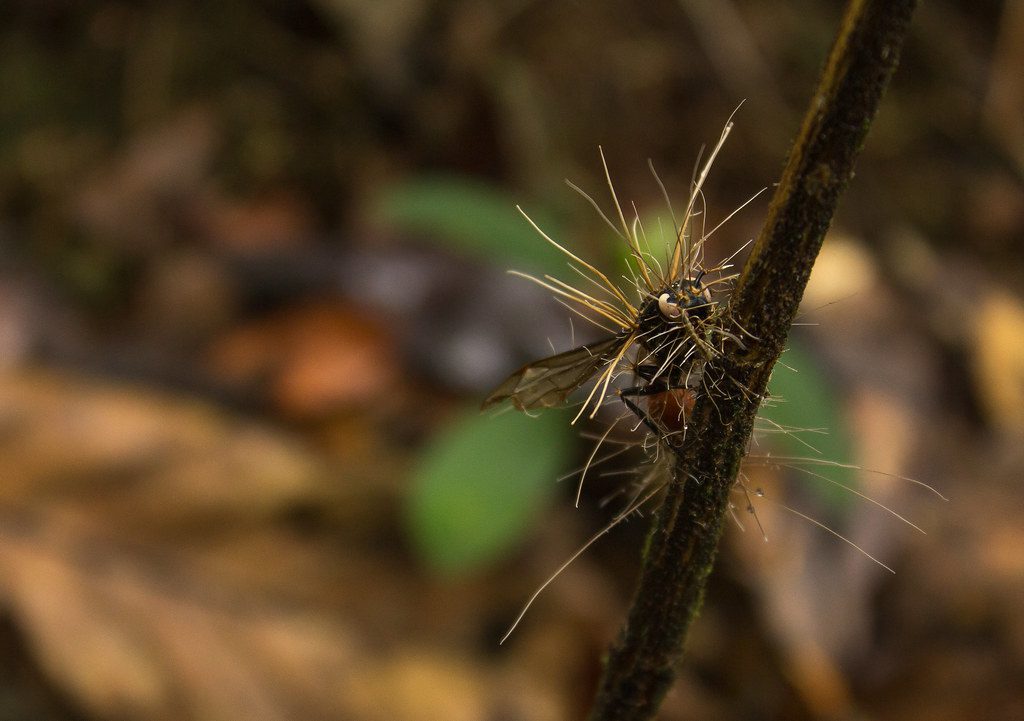
Strategies for developing effective vaccines against emerging fungal pathogens
Vaccines offer a promising solution when it comes to combating emerging fungal threats; however, progress has been slow due, largely in part, because fungi possess complex cell structures that make vaccine development more challenging than with bacterial or viral pathogens. Despite these hurdles though, researchers continue working tirelessly on innovative approaches aimed at creating effective vaccines capable of protecting both humans as well as animals from harmful parasitic fungi like Ophiocordyceps unilateralis and Candida auris.
- Targeting fungal cells: Identifying unique components of fungal cells that can be targeted by vaccines, such as cell wall proteins or enzymes involved in pathogenesis.
- Immunotherapy: Harnessing the power of the immune system to fight off infections through the use of monoclonal antibodies or other immunomodulatory agents.
- Nanotechnology: Utilizing nanoparticles as carriers for delivering vaccine antigens directly into host cells, thereby enhancing their effectiveness while minimizing side effects associated with traditional vaccination methods.
In order to protect ourselves against these emerging threats posed by parasitic fungi like zombie fungus and others, it is crucial that we invest time, effort, and resources into improving our understanding of them. This includes developing better diagnostic tools capable of detecting infections early on before they become life-threatening situations, creating new treatments designed specifically at combating resistant strains, as well as working towards finding a viable vaccine solution that could potentially save countless lives across both human populations along with those found within nature’s delicate ecosystems too.
Key Takeaway:
The zombie fungus is a kind of parasitic organism that influences the conduct of ants, making them act as “zombies” and disperse the fungi to other ants. Some scientists have dubbed this phenomenon as a kind of “mental manipulation”.
Frequently Asked Questions Zombie Fungus
What is a Zombie Ant?
A zombie ant, also known as a “zombie-ant fungus” or “zombifying fungus”, is an insect that has been infected by a parasitic fungus.
The infection causes the ant to become paralyzed and display strange behaviors such as climbing up vegetation and clinging on until it dies.
Once dead, the fungus takes over its body and uses it to spread spores in order to infect other ants. It’s like something out of a horror movie!
What Fungus Causes Zombie Ants?
The Ophiocordyceps unilateralis species of fungi are responsible for causing zombie ants. This particular species can only infect certain types of ants, including Camponotini carpenter ants found in tropical forests around the world.
The fungi will attach itself to an unsuspecting ant before releasing chemicals into its brain, which cause it to act erratically and eventually die.
How Does the Fungus Take Control of an Ant?
Once attached to an ant, the Ophiocordyceps unilateralis begins secreting mind-altering chemicals into its host’s brain, which causes them to behave strangely – often leading them away from its colony and onto vegetation where it’ll cling tightly until death occurs.
At this point, fungal cells begin growing within the cadaver while simultaneously spreading spores throughout nearby areas so that more hosts may be infected with this creepy crawly curse!
In some cases, these zombies even manage to take control of other members within their own colonies – like something straight outta Night Of The Living Dead!
Is the zombie fungus real?
Yes, the zombie fungus is real. It refers to a group of parasitic fungi in the genus Cordyceps, which infect insects and manipulate their behavior for fungal reproduction. The most well-known species is Ophiocordyceps unilateralis, which primarily targets ants. For more information on this fascinating phenomenon, check out this article from National Geographic.
What is zombie causing fungi?
Zombie-causing fungi are parasitic fungi belonging to the genus Cordyceps. These fungi infect various insect hosts and alter their behavior to optimize fungal growth and spore dispersal. Infected insects exhibit unusual behaviors that eventually lead to their death, hence earning these parasites the nickname “zombie fungus.” Learn more about these fascinating organisms in this comprehensive overview by ScienceDirect.
Can humans be infected by Cordyceps?
Currently, there’s no evidence suggesting that humans can be infected by Cordyceps species responsible for zombifying insects. However, some other Cordyceps species have been used as traditional medicine or dietary supplements due to their potential health benefits. To learn more about human consumption of certain types of Cordyceps, visit this informative page from WebMD.
Can fungus evolve to infect humans?
While it’s theoretically possible for a fungus to evolve and adapt to infect humans, the likelihood of this happening with Cordyceps is extremely low. The mechanisms these fungi use to manipulate insect behavior are highly specialized and unlikely to be effective in more complex organisms like humans. For an in-depth look at fungal evolution, check out this research article from Nature Reviews Microbiology.
Conclusion
In conclusion, zombie fungus is a dangerous and potentially deadly infection that can spread quickly if not treated or prevented. Therefore, it is imperative to recognize the signs and take prompt action in order to stop its spread. With proper knowledge about zombie fungus, we can protect ourselves and our loved ones from its devastating effects.
Discover the fascinating world of zombie fungus and learn how to protect our environment from its potential threats. Join us in finding solutions that will help preserve nature for future generations!






































